Brown Bunyip (species complex)
Tamasa tristigma (Germar, 1834)
© Popple Creative Industries 2014–2025
Male
Female
Species number (TNS):
112–115, 119–125.
Fore wing length:
22–36 mm.
Distribution and seasonality:
This species complex occurs
from Cape York Peninsula in
Northern Queensland south to
Ulladulla in New South Wales.
It also occurs inland at
Blackdown Tableland, Monto
and Carnarvon Gorge. Adults
may occur from September
until June.Litchfield National
Park, Gladstone, Bundaberg,
Miles, Toowoomba, Inglewood,
Beerwah, Capalaba, Moogerah
Dam, Warrumbungle National
Park.
Notable localities:
Heathlands (A. Ewart), Cairns,
Kuranda, Atherton, Paluma (J.
Moss), Townsville (G. Cocks),
Eungella, Yeppoon, Kroombit
Tops, Noosa, Brisbane, North
Stradbroke Island, Kingscliff,
Wauchope, Terrey Hills.
Habitat:
Rainforest, vine thicket, open
forest, heathland, mangroves
and groves of she-oak.
Species complex includes:
Brown Bunyip (TNS: 112):
Coast and Ranges from
Ulladulla north to Kroombit
Tops National Park, with
isolated populations at
Blackdown Tableland National
Park and Carnarvon National
Park.
Small Brown Bunyip (TNS:
113): Coastal areas from near
Yeppoon south to Cabbarita.
Blue-green Bunyip (TNS:
114, 119, 122, 125): From
Heathlands in Cape York
Peninsula south to Millstream
Creek near Ravenshoe.
Heathlands Bunyip (TNS:
115): Currently known only
from Heathlands in Cape York
Peninsula.
Eungella Bunyip (TNS: 120):
Presently known only from the
Clarke Range west of Mackay.
Atherton Bunyip (TNS: 121):
Known from the Windsor
Tableland south to Ravenshoe.
Paluma Bunyip (TNS: 123):
Restricted to Paluma Range
north of Townsville.
Whitsunday Bunyip (TNS:
124): Found on the
Whitsunday Islands.
Calling song and behaviour:
A coarse, monotonous buzz
with a low, even, rattling
quality, covering a wide span of
frequencies. Adults sit on the
main trunks and branches of
trees. Random distress calls
are often produced when a
male start calling too close to
other males.
Colour variation:
Members of this species
complex vary from rich brown
to grey-brown to green or even
blue-green. Green-coloured
individuals often fade to muddy
brown after death.
Similar species:
Ingham Bunyip, Dodd’s
Bunyip, Green Bunyip, Boulder
Bunyip.

Small Brown Bunyip
Currently known extent
dr-pop.net database record:
Brown Bunyip

Brown Bunyip
Small Brown Bunyip
Male
Female
Blue-green Bunyip
Atherton Bunyip
Male
Female
Paluma Bunyip
Male
Female
Atherton Bunyip
Blue-green Bunyip












Paluma Bunyip












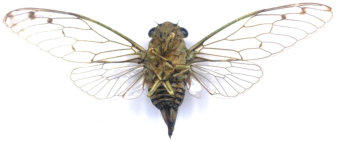

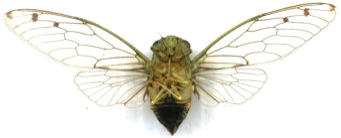



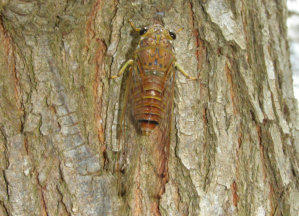

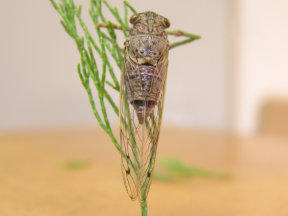





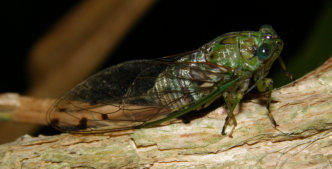
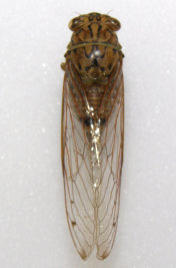
Male
Female
Habitat

